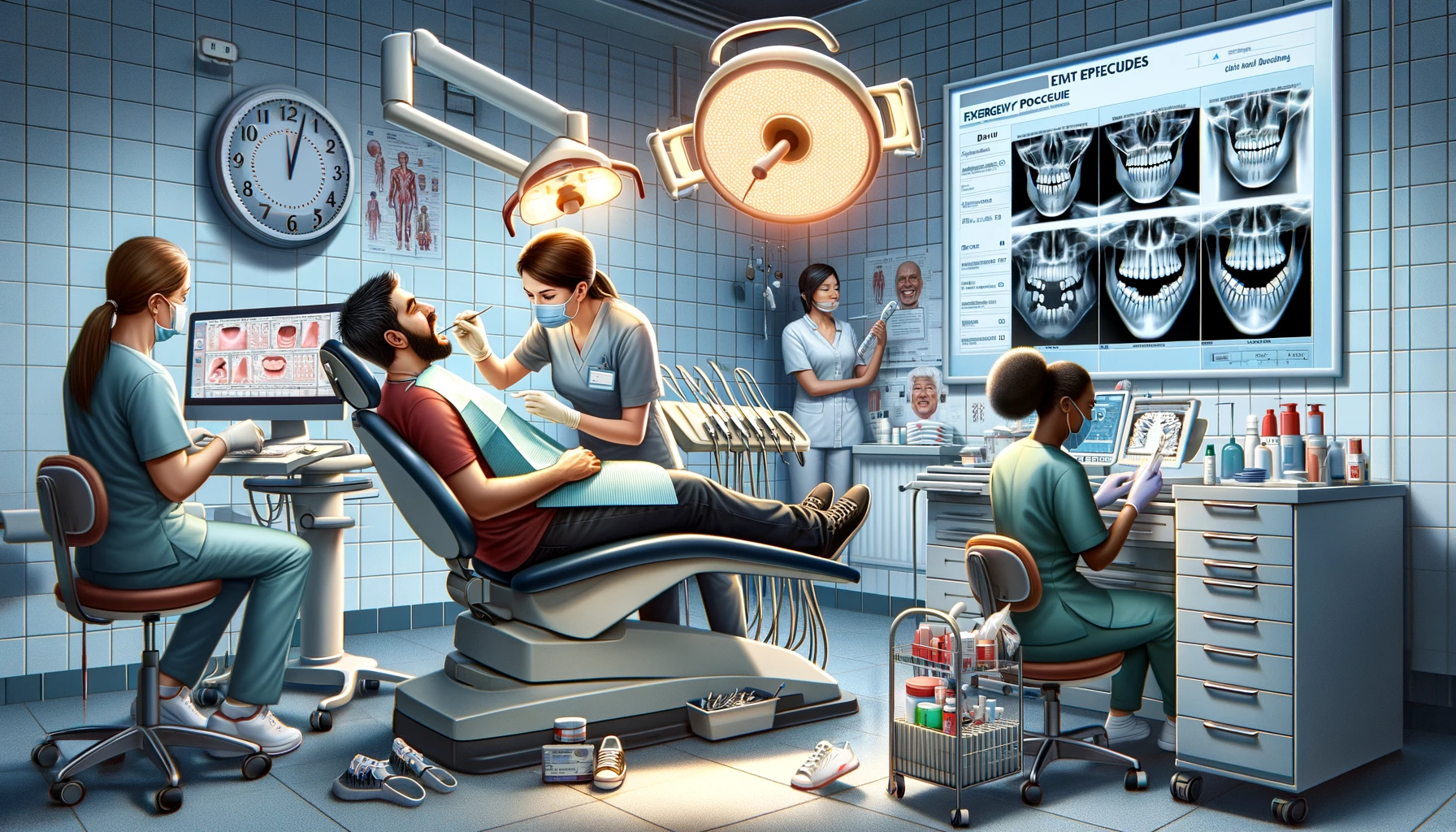It’s 2 AM, and you’re jolted awake by a sharp, throbbing pain in your jaw. As you fumble for relief, questions race through your mind: What’s causing this? How serious is it? Can it wait until morning?
Dental pain affects millions worldwide, with recent studies showing that up to 57% of adults experience toothache each year. This comprehensive guide will help you understand, manage, and prevent dental pain, leveraging the latest advancements in dental care for 2024.
Understanding Dental Pain
Dental pain can range from a mild annoyance to debilitating discomfort. To effectively address it, it’s crucial to understand its nature and origins.
Types of Dental Pain
- Sharp and shooting
- Dull and constant
- Throbbing
- Temperature sensitivity
- Pain when biting or chewing
Common Causes
- Tooth decay
- Gum disease
- Dental trauma
- Tooth sensitivity
- Infections
Did You Know? The human mouth contains over 6 billion bacteria, some of which contribute to tooth decay and gum disease.
Decoding Your Symptoms
Understanding your symptoms is the first step towards relief. Let’s explore the most common causes of dental pain and their telltale signs.
1. Tooth Decay and Cavities
Symptoms:
- Sharp pain when eating sweet, hot, or cold foods
- Visible holes or pits in teeth
- Brown, black, or white staining on tooth surface
What’s Happening: Bacteria in your mouth produce acid that erodes tooth enamel, creating cavities. As decay progresses, it can reach the sensitive inner layers of the tooth, causing pain.
2. Gum Disease
Symptoms:
- Swollen, red, or tender gums
- Bleeding when brushing or flossing
- Persistent bad breath
- Receding gums
What’s Happening: Bacterial infection in the gums can lead to inflammation, bleeding, and if left untreated, tooth loss.
Expert Opinion: “Early intervention in gum disease can prevent up to 80% of tooth loss cases,” says Dr. Emily Chen, periodontist at UCLA School of Dentistry.
3. Tooth Fractures and Injuries
Symptoms:
- Sharp pain when biting or chewing
- Sensitivity to temperature changes
- Visible cracks or chips in the tooth
What’s Happening: Trauma from accidents, sports injuries, or biting hard objects can cause tooth fractures. These can expose sensitive inner layers of the tooth, leading to pain.
4. Tooth Sensitivity
Symptoms:
- Brief, sharp pain with hot, cold, sweet, or acidic foods
- Discomfort when brushing or flossing
What’s Happening: Worn enamel or exposed tooth roots can make teeth more sensitive to temperature changes and certain foods.
5. Oral Infections and Abscesses
Symptoms:
- Severe, persistent, throbbing pain
- Swelling in the face or cheek
- Fever
- Sensitivity to touch and temperature
What’s Happening: Bacterial infections can cause pus to accumulate in tooth roots or gums, leading to painful abscesses.
Immediate Relief Strategies
While professional dental care is often necessary, these home remedies and over-the-counter solutions can provide temporary relief:
Home Remedies
- Saltwater rinse: Dissolve 1/2 teaspoon of salt in a cup of warm water and rinse for 30 seconds.
- Cold compress: Apply to the outside of the cheek near the affected area for 15-20 minutes.
- Peppermint tea bags: Apply a cooled, used tea bag to the affected area for soothing relief.
Over-the-Counter Solutions
- Pain relievers: Ibuprofen or acetaminophen can help manage pain and reduce inflammation.
- Topical anesthetics: Gels containing benzocaine can numb the affected area temporarily.
- Clove oil: Apply directly to the affected tooth for natural pain relief.
Caution: These methods provide temporary relief. Persistent pain requires professional evaluation.
When to Seek Professional Help
While home remedies can provide temporary relief, certain situations require immediate professional attention:
Emergency Situations
- Severe, persistent pain lasting more than 1-2 days
- Swelling in the face or cheek
- Fever accompanying dental pain
- Trauma resulting in a broken or knocked-out tooth
- Difficulty breathing or swallowing
Dental Procedures for Pain Relief
- Fillings: For cavities and minor decay
- Root canal therapy: For severe decay or infection
- Dental crowns: For cracked or weakened teeth
- Scaling and root planing: For gum disease
- Tooth extraction: For severely damaged or infected teeth
2024 Update: Advanced laser therapies are now available for less invasive, more precise treatments of dental issues, often resulting in faster healing times.
Prevention Strategies
Preventing dental pain is always preferable to treating it. Here are key strategies to maintain optimal oral health:
Daily Oral Care Routine
- Brush twice daily with fluoride toothpaste
- Floss at least once a day
- Use an antiseptic mouthwash
Proper Brushing Technique: Hold your brush at a 45-degree angle to your gums and use gentle, circular motions. Brush for at least two minutes, covering all surfaces of your teeth.
Diet and Lifestyle Choices
- Limit sugary and acidic foods
- Avoid tobacco products
- Stay hydrated to promote saliva production
- Wear a mouthguard during sports activities
Regular Dental Check-ups
Schedule bi-annual professional cleanings and examinations to catch and address issues early.
Technological Advancements in Dental Care (2024)
The field of dentistry continues to evolve, offering new ways to diagnose, treat, and prevent dental pain:
- AI-powered diagnostic tools: Advanced imaging and machine learning algorithms can detect dental issues earlier and with greater accuracy.
- 3D-printed dental restorations: Custom-made crowns, bridges, and implants can be produced on-site for faster treatment.
- Regenerative therapies: Stem cell treatments show promise in regenerating damaged tooth tissue and bone.
- Teledentistry: Virtual consultations allow for preliminary diagnoses and triage, especially useful for after-hours emergencies.
Did You Know? A recent study showed that AI-assisted diagnoses in dentistry have an accuracy rate of up to 95%, often catching issues that human dentists might miss.
Conclusion
Dental pain can be distressing, but understanding its causes and knowing how to respond can make a significant difference in your oral health journey. By following proper oral hygiene practices, making smart lifestyle choices, and leveraging the latest in dental technology, you can maintain a healthy, pain-free smile.
Remember, while this guide provides valuable information, it’s not a substitute for professional dental care. If you’re experiencing persistent or severe dental pain, don’t hesitate to consult with a dental professional.
Take charge of your oral health today, and smile with confidence tomorrow!
This guide was last updated in October 2024. For the most current information, always consult with a dental professional.
Dental discomfort can arise from various causes, including tooth decay, gum disease, dental injuries, enamel erosion, and infections. Understanding these can help in seeking timely treatment.
Yes, in some cases. Persistent or severe dental pain, especially if accompanied by fever or swelling, can indicate an underlying serious condition and requires immediate medical attention.
Good oral hygiene practices like regular brushing and flossing, a balanced diet low in sugars, adequate hydration, and regular dental check-ups are key to preventing dental discomfort.
For sudden and severe dental pain, especially with symptoms like swelling or fever, seek immediate dental or medical attention as it could signal a serious infection or other urgent dental issues.
Home remedies like warm saltwater rinses or over-the-counter pain relievers can provide temporary relief. However, they should not substitute professional dental care, particularly in cases of severe or persistent pain.













